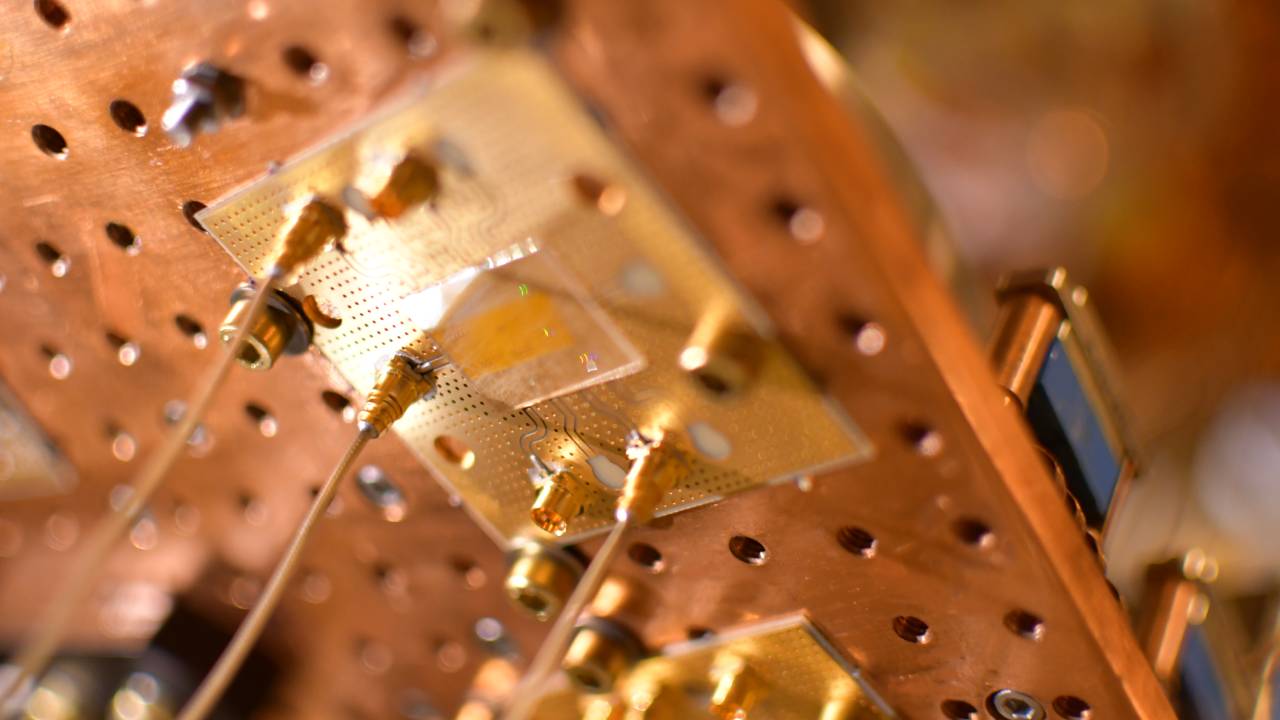Move Over, Electrons: Harvard Engineers Invent Sound-Wave Processing
Banging the drum for both classical and quantum computing
Back in the day, computers made noises. We don’t mean played music or sound effects, but made actual commotion from within. It was mostly the heads on the hard drives moving around, or the squealing of a modem, but it was comforting because you knew something was happening. Today, you’re lucky if you hear a fan whirring. But a paper in the journal Nature Electronics (summarized by Interesting Engineering) describes the use of acoustic waves to carry out the same kind of tasks as electrons in computer processors. Could PCs be about to sing again?

The paper is the work of Linbo Shao, Di Zhu and a team at Harvard's John A. Paulson School of Engineering and Applied Sciences. It's titled Electrical Control of Surface Acoustic Waves and describes a sound-wave chip that operates rather like a photonic processor. These exotic circuits swap the high and low voltages used by transistors to create binary instructions for modulated photons, using devices known as waveguides to transmit data.
The acoustic chip operates similarly, though the speed of sound is notably slower than that of light or electricity. This apparently doesn’t matter, thanks to the ease with which the short acoustic waves can be confined using nanoscale structures, while continuing to have strong interactions within their system. This confinement makes them useful for both classical and quantum computing applications.
What’s actually been proven here is that acoustic waves can be controlled on an integrated lithium niobate (a compound of niobium, lithium, and oxygen that doesn’t occur naturally but forms crystals used in waveguides, piezoelectric sensors and your cellphone) platform. They haven’t actually built an acoustic processor, but rather a modulator that can control the waves’ phase, amplitude and frequency. Doing this allowed the team to ‘tune’ the acoustics in a way they couldn’t before.
“Previous acoustic devices were passive but now we have the electrical modulation to actively tune the acoustic devices, which enables a lot of functionalities in the future development of microwave signal processing using these types of acoustic devices,” said Shao, the first author of the paper and an assistant professor at Virginia Tech.
The next step is to build larger, more complex acoustic-wave circuits that will integrate with other quantum systems. “Our work paves the way for high-performance acoustic-wave based devices and circuits for next-generation microwave signal processing as well as on-chip quantum networks and interfaces linking different types of quantum systems, including solid-state atomic systems and superconducting qubits,” said Shao.
And as for singing CPUs, well, probably not: the waves used in the experiments have frequencies measured in gigahertz, higher than even the most formidable soprano.
Get Tom's Hardware's best news and in-depth reviews, straight to your inbox.

Ian Evenden is a UK-based news writer for Tom’s Hardware US. He’ll write about anything, but stories about Raspberry Pi and DIY robots seem to find their way to him.
-
pclaughton We've already tricked rocks into thinking. Tricking noise into thinking seems cool too.Reply